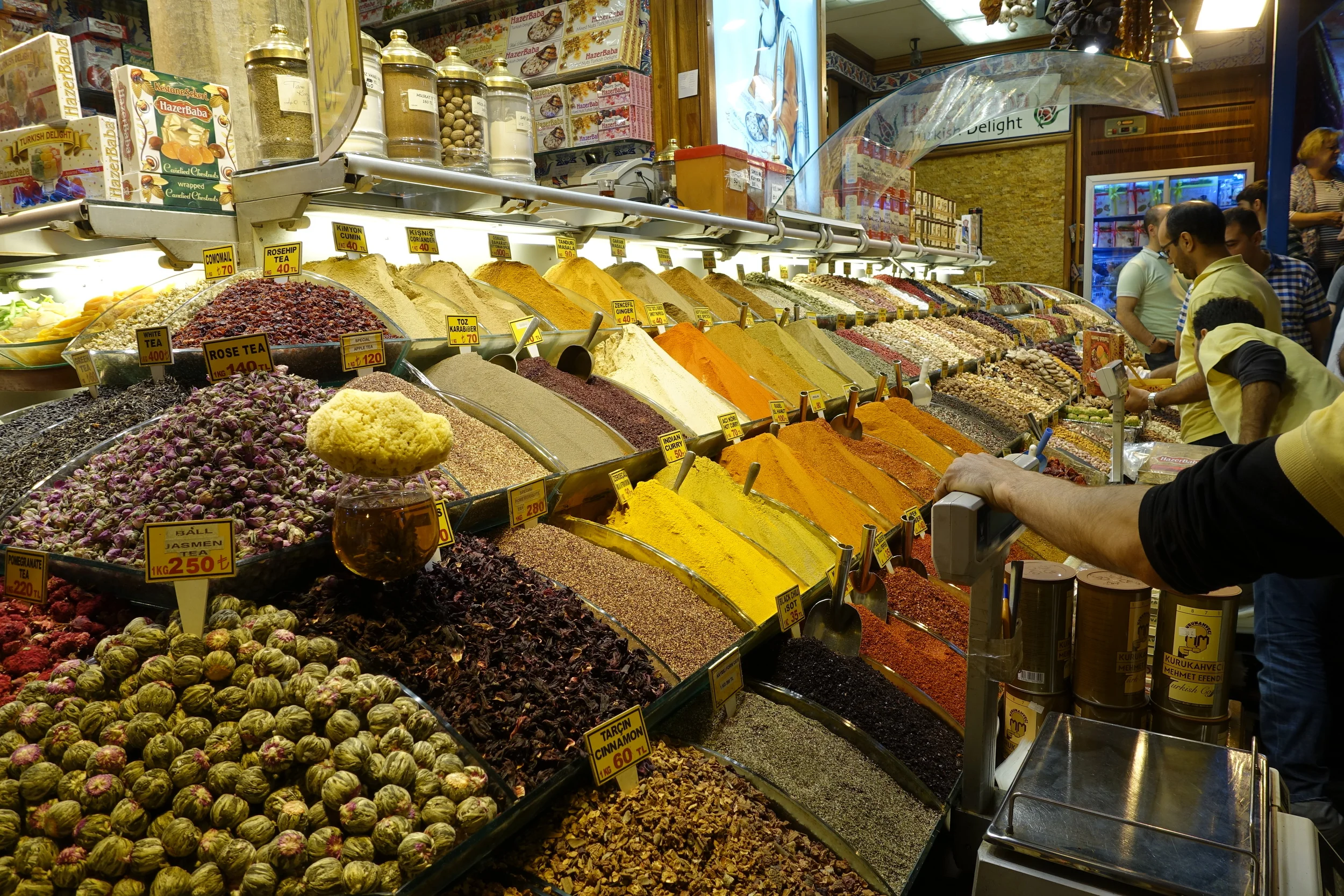We resolved to get out of bed by 10:30 (alarms were set for 8 AM, ha!) and walked to catch the tram to cross the Golden Horn and get to the Grand Bazaar, one of the world's largest and oldest covered markets. The Grand Bazaar was a textile market to start in 1455, when it was built shortly after the Ottomans took Constantinople. Today, inside, there are 61 covered streets, and thousands of shops offering carpets, Turkish delight, tea, coffee, jewelry (gold, silver, diamonds and otherwise), clothing, leather goods, and decorative wares in addition to textiles. Oh and fakes. So many fakes. We managed to walk out without spending a single lira on anything but a lunch of rice, doner, roasted vegetables, and pilaf at Havuzlu. We would love to purchase a carpet, and saw so many beautiful ones, but need to arm ourselves with some knowledge before we return for some haggling!
Turkish simit. Kind of like a bagel.
After wandering through the Grand Bazaar and effectively brushing off the hawkers, we headed down the hill to the Spice Bazaar. Built in 1660 as part of the New Mosque complex, it remains the spice trade center of Istanbul. We walked past piles and piles of a variety of curry, Iranian saffron, rose tea, pomegranate tea, lemon balm, henna, and lots of spice blends. There were also shops selling all types of nuts with a focus on pistachios and pine nuts as they're a huge part of Turkish cuisine, delicious Turkish Delight and other sweets, Turkish pastries, and olives.
We visited the Yeni Cami, or New Mosque, next. I had read and been told to bring a scarf along for visits to mosques, even though they're often available to borrow. Appropriate dress for women means having a covered head, shoulders covered, and legs covered above the knees. Shoes are not allowed inside, and there was also a working fountain in the courtyard for those who want to wash before prayer. Since Vince and I had been on our feet for some time by then, we enjoyed sitting on the carpet inside and admiring the beautiful iznik-tiled interior walls and domes.
Jet lag was catching up to us, as was the cold rain and wind, so we stopped by a cafe overlooking the Golden Horn for a break of Coke (for me) and Turkish coffee (for Vince). With Turkish coffee, the beans are ground extremely fine, and not filtered. This makes the consistency of the coffee very mud-like, and the strength extra strong! The coffee came served with a small dish of Turkish delight -- gelled fruit, which is often embedded with pistachios. It might be Vince's new favorite afternoon pick-me-up.
We then continued on foot to the Chora Church. Considered as one of the finest remaining examples of a Byzantine church, it was built outside of Constantinople's then-walls in the early 5th century, though today most of the structure dates from the 1000s. Frescoes and glittery mozaics partially line the walls and domes, and although restored after they were covered with plaster (the Ottomans had it converted into a mosque) and perhaps natural disaster, it's easy to imagine how stunning they really used to be. Today it sits as a museum.









